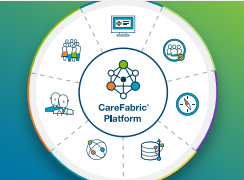In the first post about the 21st Century Cures Act (Cures Act), we discussed going beyond basic interoperability to true integration to improve patient outcomes. In this post, we’ll focus on electronic health record (EHR) adoption, which sounds simple, but is rife with obstacles. Today we will discuss three of those obstacles: funding, data confidentiality/information blocking/complex data sharing regulations and usability.
Funding
One goal of the Cures Act was to strengthen mental health parity laws with input from the Department of Health and Human Services (HHS). Specifically, it asks HHS to create a plan for improved federal and state coordination related to mental health parity. Historically, federal funding incentives for healthcare IT have largely excluded health and human services providers; although there has been a movement to establish more financial opportunities, including a recent bill, the Improving Access to Behavioral Health Information Technology Act (IABHITA), which recently passed in Congress.
The IABHITA recently passed in the House and Senate as part of a larger opioid package, and it establishes a pilot program within the Center for Medicare and Medicaid Innovation (CMMI) to incentivize behavioral health providers to adopt and use technology to improve quality and coordination of care through the electronic exchange of health information.
Another funding example is the establishment of Certified Behavioral Health Clinics(CCBHC), which allocated HHS dollars to eight pilot state behavioral health providers to purchase and use healthcare IT. CCBHCs were created as part of the Protecting Access to Medicare Act (PAMA), which established a demonstration program based on the Excellence in Mental Health and Addiction Treatment Act.
This two-year initiative is intended to expand access to mental health and addiction treatment care in community-based settings and infuse more than $1.1 billion into those services, making it the largest investment in mental health and addiction treatment in generations. In May 2018, the Substance Abuse and Mental Health Services Administration (SAMHSA) began accepting applications to expand the CCBHC demonstration project to include 24 states. Potential funding for this expansion could reach $48 million. When you combine the initial investment and the expansion, that’s a bucket of $1.6 billion … a far cry (roughly 6 percent) from the $30 billion hospitals and primary care physician received in the American Recovery and Reinvestment Act of 2009.
Data confidentiality, information blocking and complex data sharing regulations
Since the passing of the Cures Act more than two years ago, separate groups have been focused on discussing and recommending regulations to implement the data blocking provisions. Many stakeholders are disappointed that clear information on the rules and penalties have not been published because it only continues to perpetuate patient safety issues and increase costs and waste.
If you are going to talk about information sharing within health and human services, you must include 42 CFR Part 2 (Part 2), a federal statute created to ensure the confidentiality of medical records for people seeking treatment for substance use disorders from federally-assisted programs. It requires programs to have a patient’s written consent before releasing information to other providers and was meant to encourage people to seek treatment and reassure them that their privacy would be protected.
However, Part 2 encumbers the ability for care providers to share data with a person’s entire care team to achieve whole-person care. As the world of healthcare significantly advances its data sharing capabilities and new models of integrated care are established, an electronic infrastructure for managing and exchanging patient data is needed. Originally, Part 2 was created to ensure privacy, but is not compromising care in some instances. Care coordination between an individual’s care providers can be incomplete because the care coordinator wasn’t aware that the person was seeking mental health or addiction treatment, which poses a significant risk of potential prescribing errors and prevents fully informed care.
In June 2018, the Opioid Prevention and Patient Safety Act passed the House by a wide bipartisan 357 – 57 margin. However, the bill stalled in the Senate and was not included in the SUPPORT Act package passed by Congress later in the fall. The bill would have more closely aligned Part 2 with the Health Insurance Portability and Accountability Act (HIPAA) for the purposes of healthcare treatment, payment and operations, as well as additional privacy protections for individuals with a history of substance use of mental illness. This would allow for appropriate sharing of records among a person’s entire care team, helping to ensure they receive the true integrated care they need.
Usability
Usability can mean a lot of different things to different people, so to avoid confusion the Health Information and Management Systems Society (HIMSS) by classifying EHR usability into three factors: effectiveness, efficiency and satisfaction.
I believe effectiveness is the most important factor and includes many things, but first and foremost is safety. It must take into consideration the accuracy and completeness with which users can complete tasks. In other words, how easy is it for a user to make an error? When an error is made, it can lead to incomplete and inaccurate information, which as a result can alter clinical decision making and compromise patient safety. This doesn’t just include safety errors; any click mistake could result in harm to the individual. An effective EHR is a non-negotiable.
Most people put efficiency at the top of their list. How fast can they complete a specific task? But if the system isn’t effective, efficiency doesn’t matter. But, if the EHR is effective, then speed does matter. The less time spent in the EHR, the more time you can spend with your client.
Satisfaction. Do the end-users like the system? Typically, if the EHR is effective and efficient, the answer is yes. Satisfaction is such a vital component that the Office for the National Coordinator for Health Information Technology (ONC) final phase of meaningful requires that anyone tested on the medication test complete an ONC Safety Enhance Design NISTIR 7742 report. I know this sounds super technical, but the report looks at all three usability components and is a wonderful way to look at certified EHRs from a usability and satisfaction perspective. You can obtain copies of these reports from the ONC website.
Check out Part 3 of our series next week when we explore the importance of maintaining proactive clinical workflows.





